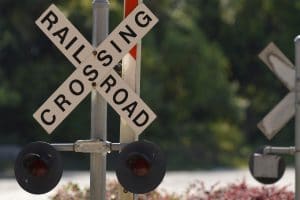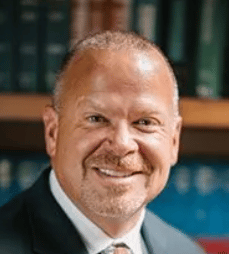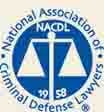 There’s an entire world of industrial operations around us all the time that most of us never consider. We take traffic signals for granted, but operators must ensure that green, yellow and red work in a certain sequence and, in most cases, work together with other signals to control traffic flow. These controls are even designed to fail in a certain way when something goes wrong – think about what would happen if an intersection had green lights in every direction!
There’s an entire world of industrial operations around us all the time that most of us never consider. We take traffic signals for granted, but operators must ensure that green, yellow and red work in a certain sequence and, in most cases, work together with other signals to control traffic flow. These controls are even designed to fail in a certain way when something goes wrong – think about what would happen if an intersection had green lights in every direction!
Traffic control systems include other mechanisms, like over height indicators on highways that alert truck drivers about low overpasses and the gate arms and flashing lights at railroad crossings. These systems are designed for a high degree of reliability. After all, they must function 24/7/365 in all types of weather conditions, recover gracefully from power outages, and account for all other kinds of scenarios. While the individual components are fairly simple, the sheer number of traffic controls in a given area combine to create an incredibly complex system.
Of course, traffic control systems are only as good as the individual operators. The infamous “Can Opener” bridge is a nearly perfect example of this. For the unfamiliar, the bridge in question was originally 11’8”, over two feet lower than the Federal Highway Administration’s minimum recommendation of 14 feet. According to 11foot8.com, “Between 2008 and 2019, on average, a truck got visibly damaged a little more than once a month at the bridge (150 crashes in 140 months).”
These incidents happen despite dozens of signs, flashing lights and even a laser measuring system that attempts to warn drivers of over height trucks. Incidentally, “The North Carolina Department of Transportation has futilely tried to stop the crashes over the years. …[but] there’s only so much they can do, as the bridge is technically the property of the North Carolina Railroad Company,” according to IndyWeek.
While this is certainly one railroad crossing you want to look out for, there are much more common issues with railroad tracks to be aware of. Railroads are built to certain grade and curve specifications – when the surrounding terrain doesn’t match, it gets modified to meet those requirements. This is why some railroad crossings are so much higher than the roads they cross; trains simply cannot account for quick changes. That inability to adjust doesn’t just apply to grade. Trains can’t do much of anything very quickly, which is why they’re so dangerous to vehicles at intersections.
Trains have their own system of traffic control and rules for passing, stopping and right of way. However, the system has different rules and components than those used for regular traffic for a very good reason; they deal with methods of transportation that have completely different characteristics. The problem is that two different systems must work together at certain points; this intersection of two complex systems results in a weak point for both.
Trains on their own are relatively safe. It’s when rail systems and traffic systems meet that the circumstances turn deadly. Operation Lifesaver, Inc. (OLI) is a non-profit dedicated to rail safety education and raising awareness of the dangers of train crossings. From their Track Statistics, “…data shows that highway-rail grade crossing collisions and pedestrian trespass on tracks together account for over 95% of all railroad fatalities.”
This problem gets closer to home when we consider that, “according to [Federal Railroad Administration] FRA statistics, 1,901 highway-rail grade crossing collisions occurred in 2020. Approximately 65% of all 2020 highway-rail grade crossing collisions occurred in… [just 15] states.” Tennessee ranks 11th on the list, with 51 collisions last year alone. So why are train accidents so common in the Volunteer State?
Earlier, we mentioned three different problems that trains present to traffic control; terrain challenges (or grade), signaling systems, and maneuverability. Each of these are characteristics of trains as transportation modes and consequences of the fact that trains are designed to haul incredible amounts of weight using an almost unbelievable amount of power. Big plus powerful equals dangerous. As much as we talk about the hazards of big trucks, trains are an order of magnitude larger and, consequently, deadlier. Let’s take a closer look:
- Grade changes. Trains require smooth, level tracks. When the road isn’t up to grade, the road changes, not the tracks. This can result in a major elevation change that pose challenges to motor vehicle operators. In extreme cases, elevation changes can cause big trucks or low-clearance vehicles to literally get stuck at crossings. The same elevation issues can make it harder to see when a train is coming if signals are absent or broken.
- Signaling systems. On private property or with certain exemptions, some train crossings are not required to have signals or signs installed – even on active tracks. In other cases, signaling systems are designed to default to a “down and active” state. When these signals fail to work, there can be no indication of an oncoming train.
- Maneuverability. Operation Lifesaver offers a safety poster titled “The Most Lopsided Clash In History” that depicts an average size adult male against a train. The collision pits the 175 pound person against a 6,000 ton train. Even big trucks clock in at a measly 40 tons by comparison. All that weight means trains simply can’t stop in time to avoid a collision with an obstacle on the tracks.
These aren’t just hypothetical situations. A fatal collision between a big truck and a train in early September prompted FreightWaves to publish an article aimed at reminding truck drivers about railroad crossing safety regulations. The article cites other recent train/truck incidents, including one in Greeneville when, “A trucker last month… blamed a bush for blocking his view when he made the decision to pull out in front of a train.”
These collisions don’t just endanger train crews and truck drivers. When an unstoppable force meets an immovable object, the consequences are catastrophic. A 6,000 ton freight train will turn a 40-ton commercial truck into an equivalent amount of high-speed shrapnel. In addition to the physical danger this creates to pedestrians and motorists in the immediate area, the contents of rail cars can mean even bigger problems over much larger areas.
Tennesseans might recall the horrific derailment in 2015 in Maryville. CBS reported that a toxic chemical being hauled by the train caught fire and, “forced 5,000 residents within a two-mile radius of the crash site to evacuate their homes… over a dozen first responders were taken to a nearby hospital for treatment after exposure to the chemical. Multiple local businesses were also shut down as a precaution.” Clearly, these big crashes can have big impacts, and not just to those at the scene of the accident.
Railroad crossings might be a relatively small area compared to roadways, but they carry a disproportionately high degree of risk. Keeping you and your loved ones safe around trains is mostly a matter of awareness; if you see tracks, think train. Trains don’t travel on fixed schedules and can move in either direction on any track. Maybe most importantly, OLI explains that, “Trains have the right of way 100% of the time over emergency vehicles, cars, the police and pedestrians.”
In short, trains can’t stop for you, so you must be the one to stop for the train. It’s easy to say, but hard to practice mindfulness when crossing train tracks is just a routine part of your day. Worse, even when you follow the rules, other drivers or even faulty equipment can put you and your loved ones in serious danger. When big trucks, big trains, or even big cars collide, the people involved suffer the consequences. The larger the engine, the higher the likelihood is that someone is catastrophically injured or killed.
The experienced Sevierville personal injury lawyers at Delius & McKenzie, PLLC know that catastrophic injuries have devastating consequences for you and your loved ones. When those injuries are caused by another person’s negligent, dangerous or even illegal behavior, our accomplished attorneys fight aggressively to recover damages to the fullest extent of the law. We work hard so your family can focus on healing and planning for the future. We proudly serve those in and around Sevierville, Seymour, Gatlinburg and Pigeon Forge. To schedule a free consultation and learn more about your case, call us at 865-428-8780 or fill out our contact form today.

Attorney Bryan E. Delius was born and raised in Sevier County, TN. He founded Delius & McKenzie more than 20 years ago, after receiving his JD from the University of Tennessee at Knoxville. He is admitted in Tennessee and in several federal court systems. Learn more about Bryan E. Delius.




